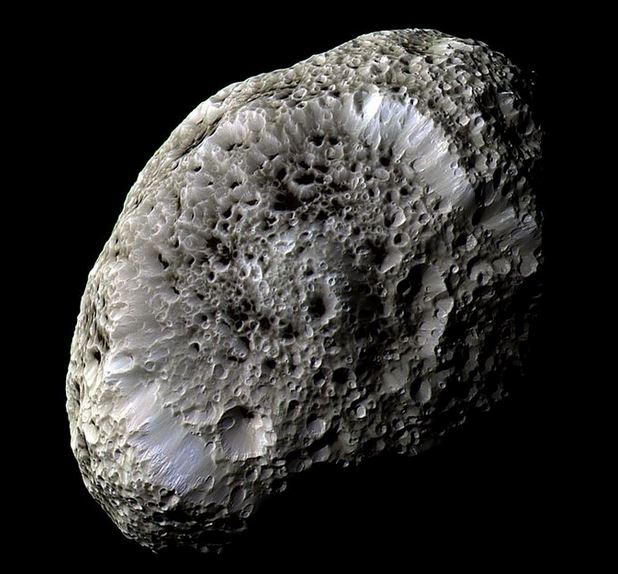When unmanned spacecraft Cassini flew by Hyperion, one of Saturn’s outer moons, it took this stunning image of the potato-shaped celestial body that looks like a porous sea sponge floating in the black surroundings of the deep sea.
During the flyby, Cassini got first-hand experience of Hyperion’s surface, which is bathed in charged particles – the moon delivered a giant 200-volt electric shock at the spacecraft.
Hyperion’s surface becomes electrostatically charged as it is bathed by a constant stream of charged particles coming from Saturn’s magnetic field and the Sun.

This stunning false-color view of Saturn’s moon Hyperion reveals crisp details across the strange, tumbling moon’s surface. (Image: European Space Station)
Astronomers say many celestial bodies in our Solar System are electrostatically charged. However, the data sent from the Cassini flyby represent the first-ever experience of a charged natural object in space apart from our own Moon.
The image was taken by Cassinin when it performed a flyby of the 410 x 260 x 220 km moon on 26 September, 2005, and was released by the European Space Station earlier this week.
Hyperion, which has dimensions resembling a potato and a pumice stone-like surface, is one of the biggest bodies in our Solar System known to be so irregular.
It’s unusual appearance is due to its extremely low density for its size, says the European Space Station (ESA), giving it weak surface gravity and high porosity.
Because of these properties the whole moon is porous, like a massive sponge, with extremely well-preserved craters of every shape and size packed together across its surface.
Made up mainly of water ice
Scientists believe that Hyperion, also known as Saturn VII, consists mostly of water ice and small amounts of rock.
Images taken using green, infrared and ultraviolet filters were combined to create this view. “The natural redness of Hyperion’s surface was toned down in this false-colour image to enhance the visibility of the moon’s surface features,” ESA wrote.
Cassini was about 62,000 kilometres from Hyperion when the picture was taken – the image scale is 362 m per pixel.
The Cassini–Huygens mission is a joint-space-venture between NASA, ESA and ASI (Italy’s space agency). The Jet Propulsion Laboratory, part of the California Institute of Technology in Pasadena, designed, developed and assembled Cassini’s two onboard cameras.
The moon is named after Hyperion, the Titan god of watchfulness and observation. It was discovered by two American astronomers William Cranch Bond (1789-1859) and (his son) George Phillips Bond (1825-1865), and English merchant and astronomer William Lassell (1799-1880) in 1848.
